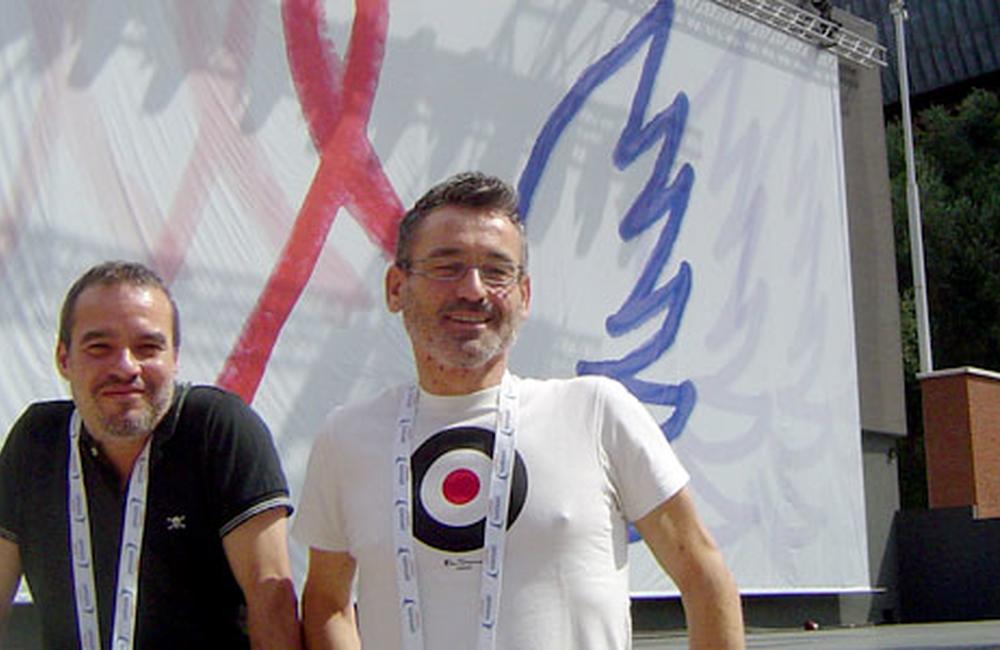
The NAM team works hard at these conferences to bring you all the important news. Conference sessions begin at 8.55am and typically end at 6.00pm. Then there are the satellite meetings, which can extend the day from 7.00am until 8.30pm.
In amongst this, and on either side, our editors have to make time to consider carefully the data that have been presented in the conference sessions, extract and distil the key points and then write up the news stories that you see appearing as our conference coverage.
We are not alone. Numerous community opinion leaders, HIV information organisations, specialist journalists and health correspondents from around the world have been here in Rome working hard to disseminate the exciting and important news from this meeting.
It’s not surprising therefore, that as the conference nears its close, fatigue begins to show on some of the faces in the media room.
The length of the days means there is also very little time to absorb the culture and sights of the cities that play host to these conferences. I did manage to catch a glimpse of the Spanish Steps en route to a meeting in a nearby hotel!
News for the Spanish-speaking world
On the final morning of the conference I met up, all too briefly, with our colleagues and friends Xavier Franquet and Juanse Hernández (pictured above) from the excellent Grupo de Trabajo sobre Tratamientos del VIH (gTt), a community-based treatment information organisation based in Barcelona.
They had been up until 3.00am filing news stories – La noticia del día – for their site http://gtt-vih.org but, despite this, they were still full of enthusiasm!
NAM and gTt have worked together for many years. At the two big scientific meetings of the year, the Conference on Retroviruses and Opportunistic Infections (CROI) and either the International AIDS Conference or this one (they alternate), gTt and NAM collaborate on the production of daily news bulletins in English and Spanish which disseminate the important news from the events as quickly as possible to those who are unable to attend.
Over the years gTt has developed impressive reach within and beyond Spain. Their website receives over 700,000 visits a year and they have over 3000 subscribers to their regular news e-bulletins, many of whom are based in Latin America.
Each day of the conference, publishing the translated editions of our daily e-bulletin involves several steps:
- News editor Michael chooses news stories and writes the draft English language edition in Rome and sends it to the team in London.
- Greta (our sub-editor) edits it, adds links to our news, resources and additional material from the conference website and imports it into the template for each day’s bulletin.
- In the meantime Kieran (our graphic designer) works on the best images to accompany each story.
- Selina (our editorial team manager) checks the final bulletin.
Once the English-language edition has been finalised, Greta passes the copy over to Miguel at gTt in Barcelona, as well as our translators who are working on French, Portuguese and Russian editions. Miguel works on the translation into Spanish, checks it with his colleagues and returns a final version to Greta, who then slots the Spanish text into the bulletin template.
Within just a few hours of the English language edition being published, the Spanish edition is winging its way around the world and being read by Spanish speakers everywhere.
Once the bulletins are sent out to our subscribers, the team in London work with Zoë (our communications manager) on other ways of letting people know about the day’s news – including making use of social media, like Twitter and Facebook.
Messages to take home
I asked Xavier and Juanse what their take-home message would be from IAS 2011. “One message is clear,” said Xavi, “treatment is prevention. However there is a great deal that has to be discussed and addressed before its potential is realised.” “But now we have an additional weapon,” Juanse added.
Xavier hopes treatment as prevention will prove a powerful tool to reduce stigma and discrimination. For people living with HIV, “it is very important for our self-esteem. It may help us not to consider ourselves vectors of transmission. This message has to be effectively communicated to wider society and policy makers too need to embrace this. The proof is here.”
More information
Keep an eye out for gTt’s non-technical report summarising all the important news from IAS2011. It will be published within the next month on http://gtt-vih.org
NAM’s daily conference bulletins are available on our website, as well as being sent out by email. You can find them in English, Spanish, French, Portuguese and Russian, along with all our news stories: www.aidsmap.com/ias2011
For more translated material, visit the translations section of our website, which includes patient information in 17 languages: www.aidsmap.com/translations
We’d like to say a big thank you to all our translators, who have been working very hard!
